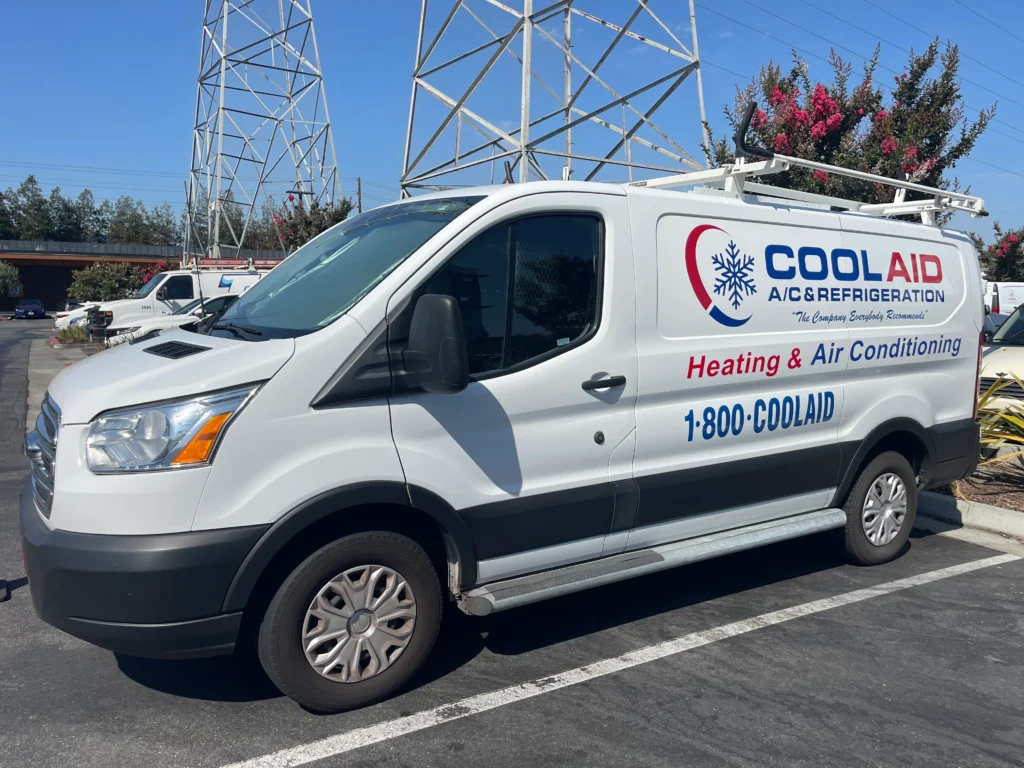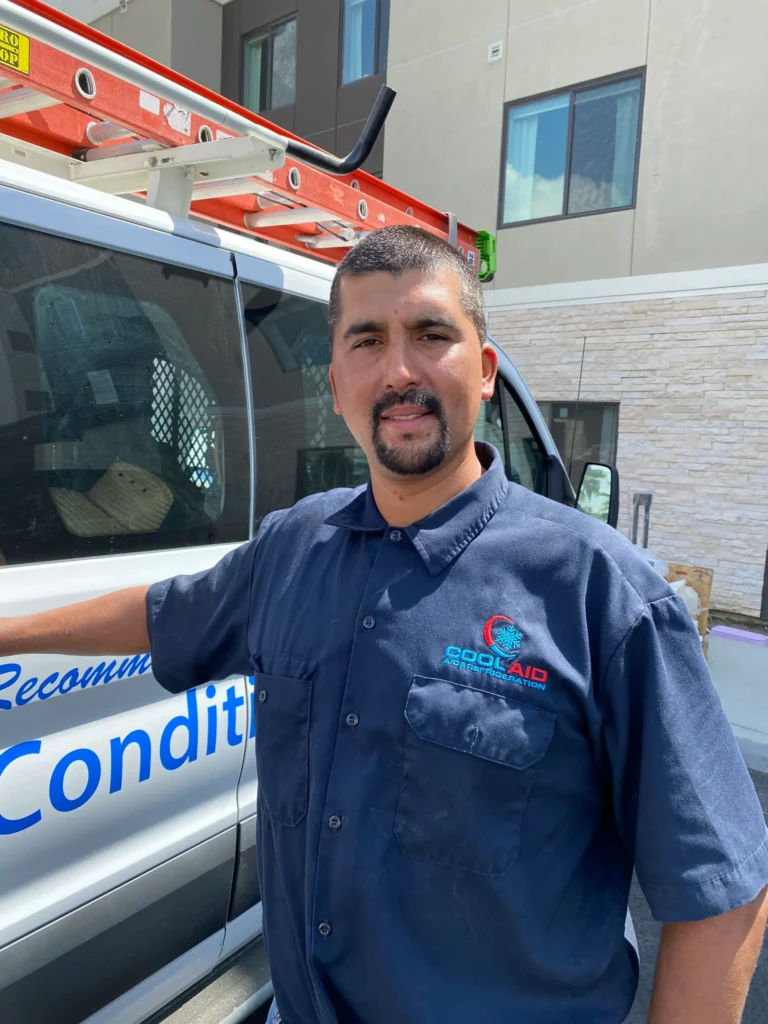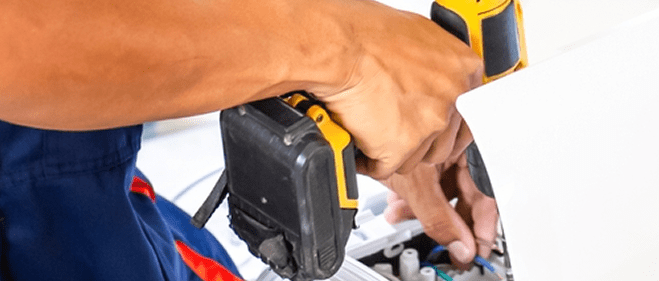24/7 Emergency Commercial HVAC Services
Table of Contents
24/7 Emergency Commercial HVAC Services
When your commercial HVAC system fails at the worst possible moment, every minute without climate control costs your business money. A broken air conditioner during a summer heatwave drives customers away, while a heating system failure in winter creates unbearable working conditions that hurt productivity and employee morale.
HVAC emergencies don’t follow business hours—they strike when you least expect them and when the stakes are highest. Understanding how to respond quickly and choose the right emergency service provider can mean the difference between minor inconvenience and major business disruption.
This guide reveals when HVAC situations become true emergencies, why rapid response matters for your bottom line, and how to choose emergency services that restore comfort quickly while protecting your long-term interests.

When Every Minute Counts: HVAC Down Situations
Not every HVAC problem constitutes a true emergency, but certain situations demand immediate professional attention to prevent serious consequences for your business operations, customer comfort, or equipment integrity.
Temperature-sensitive businesses face the highest stakes during HVAC failures. Restaurants, retail stores, medical facilities, and data centers can suffer significant losses within hours of system failure. Understanding which situations require emergency response helps you act decisively when problems occur.
System Fails, Tenant Discomfort, Product Damage
Complete system failures create immediate emergencies that require urgent response. When your HVAC system stops working entirely, indoor temperatures quickly become uncomfortable or even dangerous. Summer temperatures can rise 10-15 degrees per hour in buildings without air conditioning, while winter heating failures can drop temperatures below freezing in extreme conditions.
Commercial buildings with large glass surfaces or poor insulation experience faster temperature changes during system failures. South-facing offices can become unbearably hot within 30 minutes of air conditioning failure on sunny days. Similarly, warehouses and manufacturing facilities lose heat rapidly during winter system failures.
Tenant discomfort escalates quickly into business-threatening situations. Uncomfortable employees work less efficiently, take more breaks, and may even leave early during extreme temperature conditions. Customer-facing businesses suffer immediate impacts as clients seek more comfortable environments elsewhere.
Research shows that productivity drops 6% for every degree above 77°F in office environments. At 85°F, productivity falls by nearly 50%. These productivity losses translate directly into reduced revenue and increased labor costs per unit of work completed.
Medical facilities face additional complications when HVAC systems fail. Patient comfort becomes a health issue, and temperature-sensitive medications or equipment may require emergency protection. Senior living facilities must maintain safe temperatures to prevent health emergencies among vulnerable residents.
Product damage from temperature fluctuations can exceed the cost of emergency HVAC repairs by thousands of dollars. Restaurants lose perishable inventory when refrigeration systems fail or when excessive heat affects food storage areas. Retail businesses selling chocolate, candles, or temperature-sensitive products face immediate losses during cooling system failures.
Electronic equipment suffers damage from both high temperatures and humidity fluctuations. Server rooms and data centers require precise temperature control to prevent equipment failure and data loss. A single server failure from overheating can cost businesses tens of thousands of dollars in lost data and replacement equipment.
Manufacturing facilities with temperature-sensitive processes face production shutdowns that cost thousands per hour. Paint spray booths, pharmaceutical manufacturing, and food processing require specific environmental conditions that HVAC failures disrupt immediately.
Wine storage, art galleries, and museums face irreplaceable losses when climate control systems fail. Collections worth millions of dollars can suffer permanent damage from temperature and humidity fluctuations that emergency HVAC services could prevent.
Rapid Response for Critical HVAC Failures
Speed defines the difference between minor inconvenience and major business disaster during HVAC emergencies. Professional emergency services understand that response time directly impacts total business losses and customer satisfaction.
The first hour after system failure is critical for minimizing business impact. Quick temporary measures can often maintain basic comfort while technicians work on permanent repairs. Delayed response allows problems to compound and increases total recovery costs.
Same-Day Service & Temporary Solutions
Same-day service prevents overnight comfort problems that could affect the following day’s business operations. Emergency technicians arrive within hours of your call, equipped with common replacement parts and diagnostic equipment needed to restore basic system function quickly.
Professional emergency services maintain inventory specifically for urgent repairs. Common failure points like contactors, capacitors, and thermostats are stocked on service vehicles for immediate replacement. This preparation eliminates delays waiting for parts delivery during emergency situations.
24/7 dispatch services ensure rapid response regardless of timing. Nights, weekends, and holidays see some of the highest demand for emergency services because that’s when many system failures occur. Professional services maintain on-call technicians specifically for after-hours emergencies.
Temporary solutions keep businesses operational during complex repairs that require time or special equipment. Portable cooling units can maintain comfort in critical areas while main system repairs are completed. These temporary measures prevent business closures and revenue losses during extended repair periods.
Strategic temporary cooling focuses on the most critical areas first. Customer-facing spaces, server rooms, and areas with temperature-sensitive equipment receive priority for temporary climate control. This approach maximizes business continuity while repairs proceed.
Temporary heating solutions during winter emergencies prevent freeze damage to plumbing and equipment while maintaining basic comfort. Space heaters, temporary boilers, and emergency heat pumps can bridge the gap during major system repairs.
Load management during temporary solutions prevents electrical system overload while maintaining essential climate control. Professional technicians understand electrical capacity limitations and configure temporary equipment accordingly.
Communication about repair progress and expected completion times helps businesses plan around system downtime. Regular updates allow managers to adjust staffing, inform customers, and minimize operational disruptions.

Why Choose Our Emergency HVAC Team?
Not all HVAC contractors are equipped to handle true emergencies effectively. Emergency situations require specialized skills, immediate availability, and the ability to work efficiently under pressure while maintaining quality standards.
The quality of your emergency service provider directly impacts repair effectiveness, total costs, and business recovery time. Choosing experienced emergency professionals ensures the fastest possible restoration of normal operations.
Experienced Technicians, Transparent Pricing, Fast Arrival
Experienced emergency technicians combine technical expertise with crisis management skills that standard service calls don’t require. They work efficiently under pressure while accurately diagnosing problems and implementing effective solutions quickly.
Commercial HVAC emergencies often involve complex systems that residential technicians aren’t qualified to service. Emergency technicians must understand three-phase electrical systems, commercial refrigeration principles, and building automation controls that require specialized training.
Emergency diagnostic skills differ from routine maintenance capabilities. Technicians must quickly identify root causes while working in high-stress environments with time pressure and business operations at stake. This expertise comes only through experience with emergency situations.
Tool and equipment readiness enables immediate action upon arrival. Emergency technicians carry comprehensive tool sets and common replacement parts that allow them to begin repairs immediately without return trips for equipment.
Transparent emergency pricing prevents surprise costs during stressful situations. Professional emergency services provide clear rate structures that specify after-hours charges, emergency response fees, and diagnostic costs before beginning work.
Emergency service rates reflect the added costs of immediate availability, after-hours response, and expedited service. While higher than standard rates, professional emergency pricing provides value through rapid response and immediate problem resolution.
Written estimates for complex repairs ensure you understand all costs before authorizing expensive work. Even during emergencies, professional contractors provide clear explanations of repair options and associated costs.
No-surprise billing means the price quoted is the price charged. Professional contractors stand behind their emergency quotes and don’t add unexpected charges after work completion.
Fast arrival times minimize business disruption and demonstrate commitment to emergency service quality. Professional services maintain response time targets and communicate realistic arrival expectations during initial contact.
Geographic coverage affects response times significantly. Local emergency services with multiple service areas provide faster response than distant contractors who must travel long distances during peak demand periods.
Traffic and weather considerations influence arrival estimates, especially during severe weather events that often trigger HVAC emergencies. Experienced dispatchers account for these factors when providing arrival time estimates.
Priority scheduling gives emergency calls precedence over routine service calls. When your business faces a genuine HVAC emergency, professional services interrupt standard schedules to provide immediate assistance.

Emergency HVAC Issues We Fix
Your system may need urgent attention if you’re experiencing:
- No airflow from vents
- Furnace blowing cold air
- AC blowing warm air
- System won’t turn on
- Iced-over AC or refrigerant line
- Thermostat not responding
- Loud, unusual noises from the unit
- Weak airflow or poor indoor air quality
- Water leaks around the unit
- Burning smells or electrical odor
- Complete system failure
If you notice any of these signs, don’t wait. Contact COOL AID for immediate HVAC help.
Commercial HVAC Emergency Service Areas We Cover
Don’t Wait Until Disaster Strikes
Emergency HVAC services require local presence and geographic coverage that ensures rapid response throughout your service area. Understanding coverage areas and response capabilities helps you choose services that can reach your location quickly when emergencies occur.
Service area coverage directly affects response times and availability during peak demand periods. Local contractors with multiple service technicians provide better emergency coverage than distant services that must travel long distances.
Bay Area Locations Served
Comprehensive Bay Area coverage ensures rapid response regardless of your business location. Professional emergency services maintain service territories that cover all major cities and suburban areas throughout the region.
Primary coverage areas include San Francisco, Oakland, San Jose, and all surrounding communities. This comprehensive coverage ensures consistent response times and service quality throughout the entire Bay Area market.
Multiple service zones within the coverage area provide redundant response capabilities. If one technician is handling another emergency, additional resources are available from adjacent service zones to ensure continued rapid response.
Strategic technician positioning throughout the service area minimizes travel time to emergency locations. Service vehicles are distributed geographically to provide optimal coverage and response times across all areas served.
GPS dispatch systems identify the closest available technician for each emergency call. This technology ensures the fastest possible response while efficiently managing multiple simultaneous emergency requests.
Traffic pattern awareness helps dispatchers choose optimal routes and provide accurate arrival time estimates. Local knowledge of traffic conditions, construction zones, and alternative routes ensures efficient emergency response.
Extended coverage during peak demand ensures availability even when multiple emergencies occur simultaneously. Summer heat waves and winter cold snaps create peak demand that challenges emergency service capacity.
Mutual aid agreements with other professional contractors provide backup coverage during extreme weather events or equipment failures that generate multiple simultaneous emergency calls.
On-call scheduling ensures technician availability 24/7/365 for genuine emergencies. Professional services maintain adequate staffing to handle expected emergency volume while providing backup resources for peak demand periods.
HVAC emergencies are stressful enough without worrying about finding reliable service when your business is at stake. Establishing relationships with professional emergency services before problems occur ensures rapid response when you need it most.
Emergency situations create time pressure that makes it difficult to research contractors and compare options. Smart business owners identify qualified emergency services during calm periods when they can evaluate capabilities and establish service relationships.
The cost of emergency HVAC services is insignificant compared to the losses your business faces during extended system downtime. Professional emergency response protects your revenue, preserves customer relationships, and maintains employee productivity when climate control fails.
Don’t let HVAC emergencies disrupt your business operations or compromise your success. Professional emergency services provide the rapid response, expert diagnosis, and effective repairs that restore normal operations quickly while protecting your long-term interests.
Ready to ensure your business has reliable emergency HVAC support? Contact 1800coolaid.com now to learn about our 24/7 emergency commercial HVAC services. Our experienced technicians provide rapid response, transparent pricing, and the expertise your Bay Area business needs to handle any HVAC emergency. Don’t wait for disaster to strike—establish your emergency service relationship today and protect your business from unexpected HVAC failures.
Frequently Asked Questions
How quickly can you respond to HVAC emergencies in the Bay Area?
Our emergency technicians typically arrive within 2-4 hours of your call, with priority given to life-safety situations and businesses with critical temperature requirements. We maintain 24/7 availability and strategic positioning throughout the Bay Area for rapid response.
What qualifies as a commercial HVAC emergency?
True emergencies include complete system failures affecting business operations, situations threatening product integrity or employee safety, and equipment failures in critical environments like server rooms or medical facilities. We help you determine if your situation requires emergency response.
Do you provide cost estimates before starting emergency repairs?
Yes, we provide transparent pricing and detailed estimates even during emergency situations. While emergency rates apply for after-hours service, we explain all costs upfront and offer repair options when multiple solutions exist to address your emergency.
Serving the Entire Bay Area
We proudly serve customers in:
